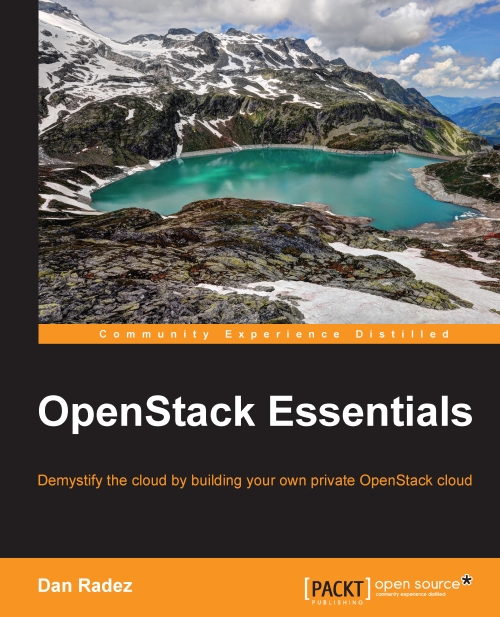Reading the manual is one way to get your head out of the clouds.
To help those stumbling with the lofty concepts surrounding OpenStack, Dan Radez, a senior software engineer at Red Hat, wrote a new book called "OpenStack Essentials."
The 182-page book is based on feedback from presentations that Radez has given around the world for people getting their heads around OpenStack. It’s also the fruit of his work with TryStack, a free service that offers networking, storage, and compute instances, without having to go all-in with your own hardware.
Superuser talked to Radez about the role of the OpenStack community, what beginners often overlook and the frustrations of DIY learning…

Who will this book help?
Beginners. This book is a written form of the same information I’ve presented in a “101/Getting Started”-type session at venues around the world.
If you don’t know what OpenStack is or would like a more tangible definition of it — or even if you’re just trying to get going with some of the basics — then this book is for you.
It covers the basic components that make up OpenStack and how they fit together in a step-by-step format.
How did your efforts with TryStack influence the book?
TryStack has brought an awareness that OpenStack is still new and shiny and there are lots of people who are still trying to figure out how to get started. In the couple of years that I have worked on TryStack, we have had over 10,000 people signup to try OpenStack through it.
Working with people through TryStack to help them get started helped me realize that it’s a real privilege for me to spend each and every day working on OpenStack and there is a real need in the industry to offer materials that cover the basics of OpenStack.
What’s the one "essential" thing most people don’t get about OpenStack
at first?
Networking. Neutron is a really powerful networking model, dynamically creating virtual networks within the cloud. Unfortunately, to get it set up you need to understand some basic networking concepts that most people have not had to deal with before. I started there with OpenStack Neutron, too, and I had to learn some basics that I had not had to deal with before.
The book tries to explain some of these concepts as best as possible in the amount of content the book was slated to contain.
What’s the role of the community in the Red Hat Distribution of OpenStack (RDO)?
RDO is upstream OpenStack packaged in RPMs (Red Hat Package
Manager.) When you install it, you get vanilla OpenStack directly from the upstream releases. What this means is: community is everything.
Since RDO is focused on packaging and testing upstream releases, the OpenStack community is key because their content is what makes up the result of installing RDO.
The RDO community is really focused on transparency. All of the packaging and testing is publicly exposed to the community. This is important for operators and developers so that they see what they are getting and what’s being done to validate what they get when they use RDO.
RDO’s community is also evolving to keep up with the fast pace that OpenStack develops at. RDO Manager is an installation initiative in the RDO community that takes all the latest and greatest that’s happening in the OpenStack community, like Triple-O and Ironic and others, and bakes it all together into an installer to help the operators in the RDO community get OpenStack installed and configured.
Why is a book helpful now — when you have IRC, mailing lists, documentation, etc.?
The internet is a big place and the computer screen is a bit unforgiving when your trying to pick up a new technology. Having a collection of web pages up that you’re trying to piece together to get something working can get frustrating in the large scope of technologies that make up an OpenStack installation. For me, I find confidence in having a book in my hands that I can hold on to and flip through for reference.
I think there’s validity in that mindset by looking at the desks of my colleagues. Most everyone has a stack of a couple books they used to come up to speed on projects they’ve worked on over the years. I can only hope to be a book on someone’s desk that has help them get started with OpenStack.
Cover Photo by Kate Ter Haar // CC BY NC
- OpenStack Homebrew Club: Meet the sausage cloud - July 31, 2019
- Building a virtuous circle with open infrastructure: Inclusive, global, adaptable - July 30, 2019
- Using Istio’s Mixer for network request caching: What’s next - July 22, 2019

)







